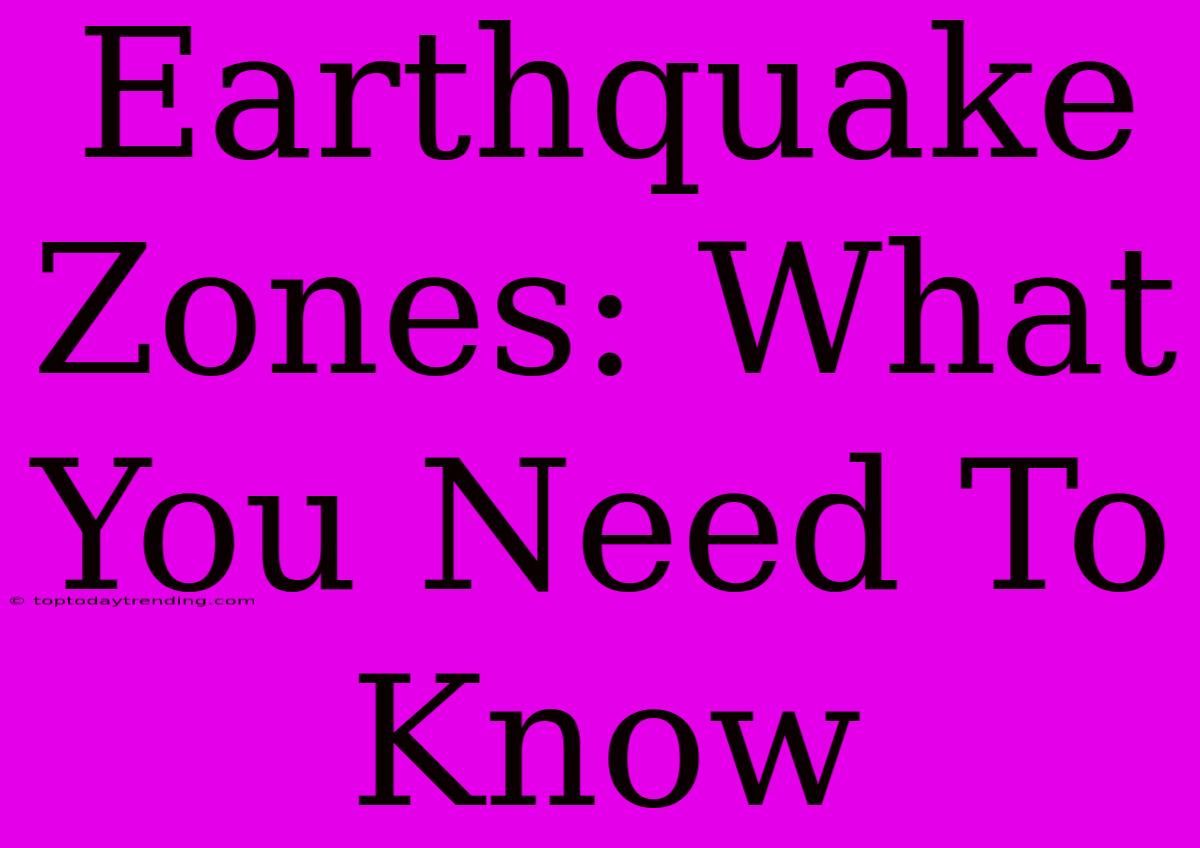Earthquake Zones: What You Need To Know
Earthquakes are a natural phenomenon that can have devastating consequences. While they occur in many parts of the world, certain areas are more prone to seismic activity than others. These areas are known as earthquake zones. Understanding these zones is crucial for preparing for and mitigating the risks associated with earthquakes.
What are Earthquake Zones?
Earthquake zones are geographical areas where the Earth's tectonic plates meet and interact. These plates are constantly moving, and when they collide, slide past each other, or pull apart, it can cause the ground to shake. The areas where these plate boundaries exist are prone to seismic activity, making them earthquake zones.
Major Earthquake Zones Around the World:
The Ring of Fire, a horseshoe-shaped region encircling the Pacific Ocean, is the most active earthquake zone on Earth. This zone is characterized by a high concentration of volcanoes and earthquakes, making it a hotspot for seismic activity. Other major earthquake zones include:
- The Mediterranean-Himalayan Belt: This zone stretches from the Mediterranean Sea through the Middle East and into Asia.
- The East African Rift Valley: This zone is a rift valley where the Earth's crust is being pulled apart, resulting in frequent volcanic activity and earthquakes.
- The Mid-Atlantic Ridge: This zone is a divergent plate boundary where new oceanic crust is being created, leading to seismic activity along the ridge.
Understanding Earthquake Risks:
It's important to understand the risks associated with living in an earthquake zone. The intensity of an earthquake is measured by the Richter Scale, which uses a logarithmic scale to determine the magnitude of the quake. Earthquakes with a magnitude of 7 or higher are considered major earthquakes and can cause significant damage.
Here are some crucial factors influencing earthquake risk:
- Proximity to the Fault Line: Areas located directly on or near a fault line are at a higher risk of experiencing strong earthquakes.
- Soil Conditions: Soft or loose soil amplifies seismic waves, increasing the intensity of ground shaking and potential damage.
- Building Codes: Buildings constructed with earthquake-resistant designs and materials are better equipped to withstand seismic activity.
Preparing for Earthquakes:
Living in an earthquake zone requires preparation. Here are some crucial steps:
- Educate Yourself: Understand the risks and potential hazards associated with earthquakes in your region.
- Secure Your Home: Secure heavy objects, learn how to shut off utilities, and create an emergency plan.
- Prepare an Emergency Kit: Stock up on essential supplies such as food, water, first aid kit, flashlight, and a battery-operated radio.
- Know Your Evacuation Routes: Familiarize yourself with evacuation routes and assembly points in case of an earthquake.
- Participate in Earthquake Drills: Regularly practice earthquake drills to ensure you and your family know what to do in the event of an earthquake.
Conclusion:
Living in earthquake zones comes with its own set of challenges and risks. By understanding the characteristics of these zones, staying informed about earthquake risks, and taking preventive measures, you can increase your preparedness and minimize the impact of these natural disasters.

